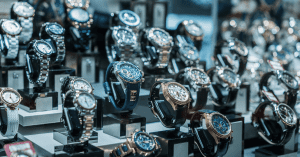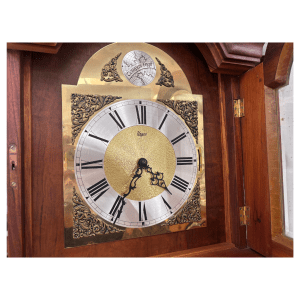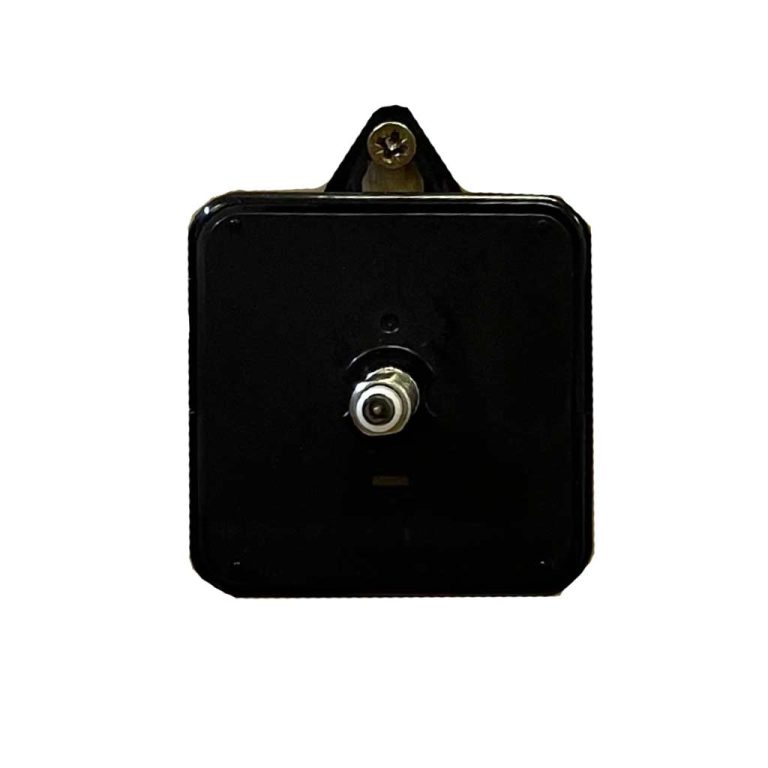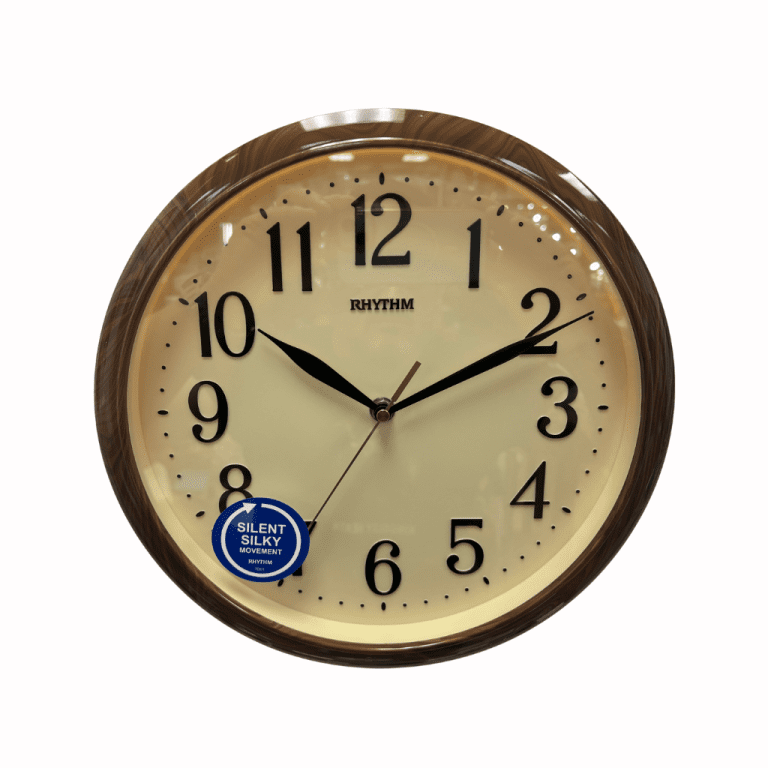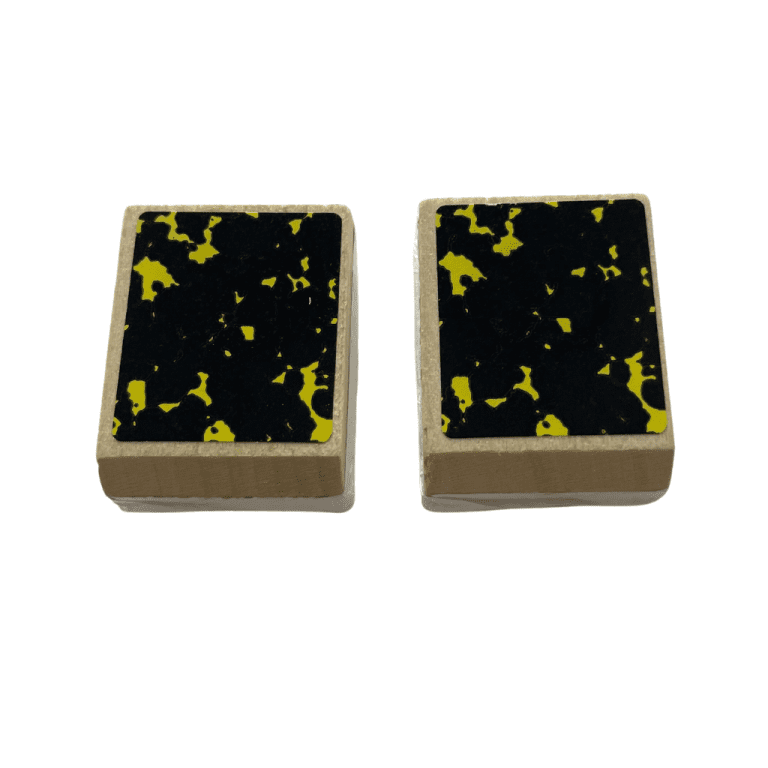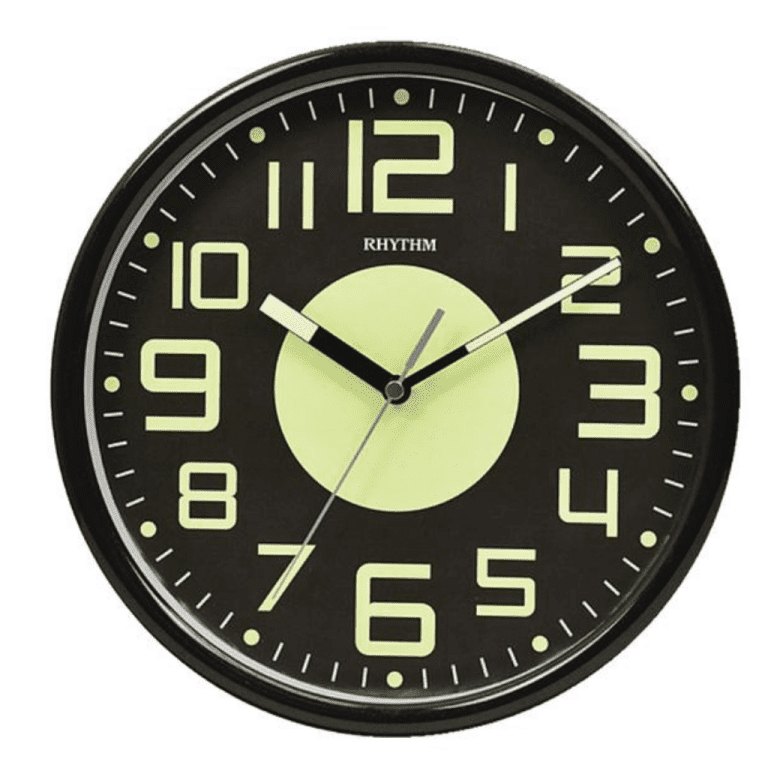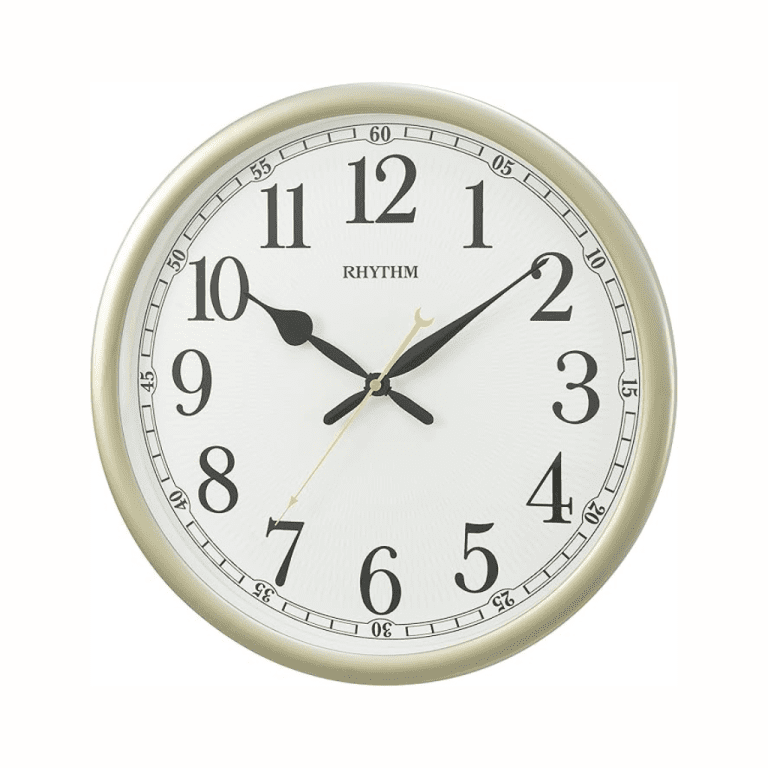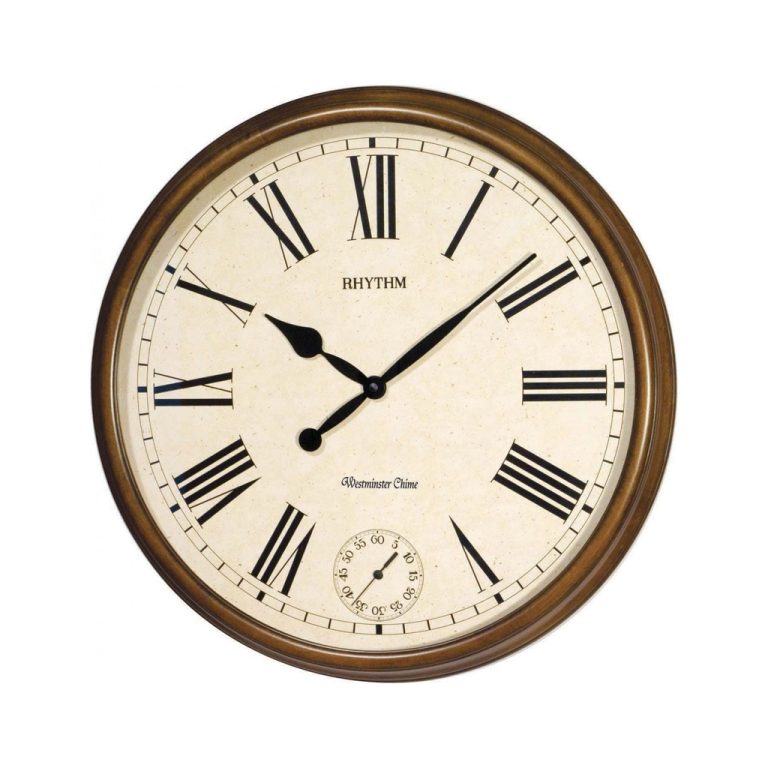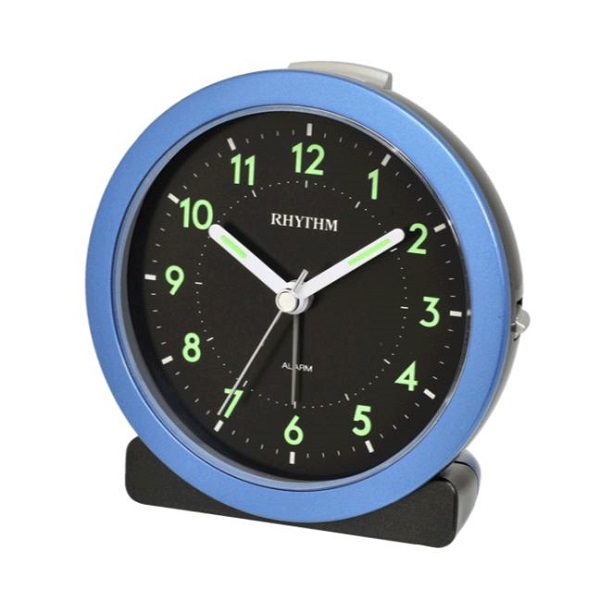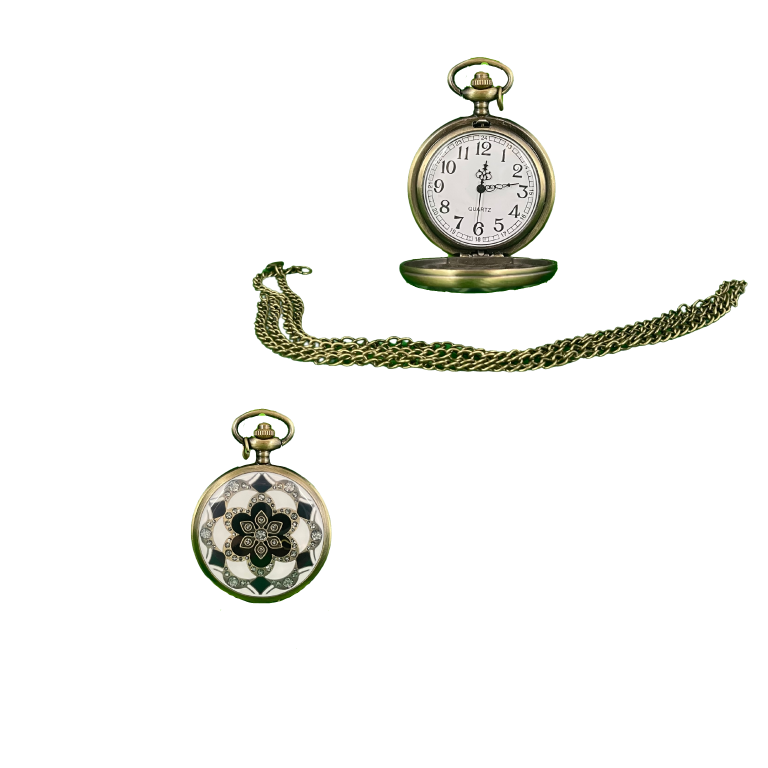It is not clear who built the first cuckoo clocks in the Black Forest but there is unanimity that the unusual clock with the bird call very quickly conquered the region. Already by the middle of the eighteenth century, several small clock making shops produced cuckoo clocks with wooden gears. So the first Black Forest examples were created between 1740 and 1750. They had hand-painted shields.
Regarding its murky origins, there are two main fables.
The first is from Father Franz Steyrer, written in his “Geschichte der Schwarzwälder Uhrmacherkunst” (History of Clock making in the Black Forest) in 1796. He describes a meeting between two clock peddlers from Furtwangen (a town in the Black Forest) who met a travelling Bohemian merchant who sold wooden cuckoo clocks. Both the Furtwangen traders were so excited that they bought one. On bringing it home they copied it and showed their imitation to other Black Forest clock traders. Its popularity grew in the region and more and more clockmakers started producing them.
The second story is related by another priest, Markus Fidelis Jäck, in a passage extracted from his report “The cuckoo clock was invented (in 1730) by a clock-master (Franz Anton Ketterer) from Schönwald (Black Forest). This craftsman adorned a clock with a moving bird that announced the hour with the cuckoo-call. The clock-master got the idea of how to make the cuckoo-call from the bellows of a church organ”. As time went on, the second version became the more popular, and is the one generally related today.
The legend that the clock was invented by a clever Black Forest mechanic in 1730 (Franz Anton Ketterer) keeps being told over and over again. But all of this is not true. This type of clock is much older than clock making in the Black Forest. As early as 1650 the bird with the distinctive call was part of the reference book knowledge recorded in handbooks. It took nearly a century for the cuckoo clock to find its way to the Black Forest, where for many decades it remained a tiny niche product.
Although the idea of placing an automaton cuckoo bird in a clock to announce the passing of time did not originate in the Black Forest, it is necessary to emphasize that the cuckoo clock as we know it today, comes from this region located in southwest Germany whose tradition of clock making started in the late seventeenth century. The Black Forest people who created the cuckoo clock industry developed it, and still come up with new designs and technical improvements which have made the cuckoo clock a valued work of art all over the world. The cuckoo clock history is linked to the Black Forest.
Even though the functionality of the cuckoo mechanism has remained basically unchanged, the appearance has changed as case designs and clock movements evolved in the region. In the beginning of the 19th century the now traditional Black Forest clock design, the “Schilduhr” (Shield-clock), was characterized by having a painted flat square wooden face behind which all the clockwork was attached. On top of the square was usually a semicircle of highly decorated painted wood which contained the door for the cuckoo. These usually depicted floral patterns (so-called “Rosenuhren”) and often had a painted column, on either side of the chapter ring; others were decorated with illustrations of fruit as well. Some pieces also bore the names of the bride and bridegroom on the dial, which were normally painted by women. There was no cabinet surrounding the clockwork in this model. This design was the most prevalent between the end of the eighteenth century and the first half of the nineteenth century. These timekeepers were typically sold from door to door by “Uhrenträger” (Clock-peddlers) who would carry the dials and movements on their backs displayed on huge backpacks.
Towards the middle of the nineteenth century till the 1870’s, cuckoo clocks were also manufactured in the Black Forest type of clock known as “Rahmenuhr” (Framed-clock). As the name suggests, these scarce wall cuckoo clocks consisted of a picture frame, usually with a typical Black Forest scene painted on a wooden background or a sheet metal, lithography and screen-painting were other techniques used. Other common themes depicted were; hunting, love, family, death, birth, mythology, military and Christian religious scenes. The painting was almost always protected by a glass and some models displayed a person or an animal with blinking or flirty eyes as well, being operated by a simple mechanism worked by means of the pendulum swinging. The cuckoo normally took part in the scene painted, and would pop out in 3D, as usual, to announce the hour.
From the 1860’s according to the decorative tastes prevailing in each moment, cuckoo clock cases were manufactured following different styles then in vogue such as; Biedermier (some models also included a painting of a person or animal with moving eyes), Neoclassical or Georgian (certain pieces also displayed a painting), Gothic, Renaissance, Baroque, Art Nouveau, etc., becoming a suitable complementary piece for the bourgeois living room. These timepieces, based both on architectural and home decorative styles, are rarer than the popular ones looking like gatekeeper-houses (Bahnhäusle style clocks) and they could be mantel, wall or bracket clocks.
But the popular house-shaped Bahnhäusleuhr (Railroad house clock) virtually forced the discontinuation of other designs within a few years.
Concurrently with Beha and Ketterer, other Black Forest clockmakers must have started to equip Bahnhäusle clocks with cuckoo mechanisms to satisfy the rapidly growing demand for this type of clock. Starting in the mid-1850s there was a real boom in this market.
By 1860, the Bahnhäusle style had started to develop away from its original, “severe” graphic form, and evolve, among other designs, toward the well-known case with three-dimensional woodcarvings, like the Jagdstück a cuckoo clock with carved oak foliage and hunting motives, such as trophy animals, guns and powder pouches.
By 1862 the reputed clockmaker Johann Baptist Beha, started to enhance his richly decorated Bahnhäusle clocks with hands carved from bone and weights cast in the shape of fir cones. Only ten years after its invention by Friedrich Eisenlohr, all variations of the house-theme had reached maturity.
The basic cuckoo clock of today is the railway-house (Bahnhäusle) form, still with its rich ornamentation, and these are known under the name of “traditional” (or carved); which display carved leaves, birds, deer heads (like the Jagdstück design), other animals, etc. The richly decorated Bahnhäusle clocks have become a symbol of the Black Forest that is instantly understood anywhere in the world.
Even today it is a favourite souvenir of travellers in Germany, Switzerland and Austria. The centre of production continues to be the Black Forest region of Germany, in the area of Schonach and Titisee-Neustadt.
The “Chalet” style, the Swiss contribution
The “Chalet” style originated at the end of the nineteenth century in Switzerland, at that time they were highly valued as souvenirs. Indeed, music and jewellery boxes of several sizes as well as timepieces were manufactured in the shape of a typical Swiss chalet; some of those clocks had also the added feature of a cuckoo bird and other automata.
There are currently three basic styles, named after the different traditional houses depicted: Black Forest chalet, Swiss chalet and the Bavarian chalet.
Commonly found in the chalet style, is the incorporation of a Swiss music box, the most popular melodies are “The Happy Wanderer” and “Edelweiss” which sound alternately. Along with the common projecting bird, it may also display other types of animated figurines; examples include woodcutters, moving beer drinkers and turning water wheels. Some “traditional” style cuckoo clocks feature a music box and dancing figurines too.
Contemporary design
Nowadays cuckoo clocks are manufactured inspired by contemporary decorative styles as well. These modern timekeepers are characterized by its functional, schematic and minimalist aesthetic.
Rombach und Haas became the first Black Forest clock manufacturer which introduced this new generation of timepieces in 2006, producing a model conceived by Tobias Reischle. Then in 2008 they started its own creations, thanks to the initiative of both Conny Haas and the company’s general manager Ingolf Haas. Their range includes minimalist, industrial, and naturalist designs, as well as intricate fretwork and hand-painted pieces.
The modern Cuckoo clock – mechanical
A cuckoo clock is a clock, typically pendulum regulated, that strikes the hour with a sound like a common cuckoo’s call and typically has a mechanical cuckoo that emerges with each note. The mechanism to produce the cuckoo call was installed in almost every kind of cuckoo clock since the middle of the eighteenth century and has remained almost without variation until the present.
The design of a cuckoo clock is now conventional. Most are made in the “traditional style” (also known as “carved”) or “chalet” to hang on a wall. In the “traditional style” the wooden case is decorated with carved leaves and animals. They have an automaton of the bird that appears through a small trap door while the clock is striking. The bird is often made to move as the clock strikes, typically by means of an arm that lifts the back of the carving.
There are two kinds of movements: one-day and eight-day clockworks. Some have musical devices, and play a tune on a Swiss music box after striking the hours and half-hours. Usually the melody sounds only at full hours in eight-day clocks and both at full and half hours in the one-day timepieces. Musical cuckoo clocks frequently have other automata which move when the music box plays. Today’s cuckoo clocks are almost always weight driven. The weights are made of cast iron in a pine cone shape and the “cuc-koo” sound is created by two tiny pipes in the clock, with bellows attached to their tops. The clock’s movement activates the bellows to send a puff of air into each pipe alternately when the timekeeper strikes.
The modern Cuckoo clock – quartz
In recent years, quartz battery-powered clocks have been available. As on the mechanical counterparts, the cuckoo bird emerges from its enclosure and moves up and down, but on the quartz timepieces it also flaps its wings and opens his beak while it sings. Instead of the call being reproduced by the traditional bellows, is a digital recording of a cuckoo calling in the wild (with a corresponding echo). The cuckoo call is usually accompanied by the sound of a waterfall and other birds in the background. During the call the doors open and the cuckoo emerges as usual, but only at the full hour, and they do not have a gong wire.
In musical quartz clocks, the hourly chime is followed by the replay of one of twelve popular melodies (one for each hour). Some musical quartz clocks also reproduce many of the popular automata found on mechanical musical clocks, such as beer drinkers, wood choppers, jumping deer, and angry wives beating lazy husbands. One thing that is unique about the quartz clock is that they include a light sensor, so that when the lights are turned off at night, they automatically silence the hourly chime. The weights are conventionally cast in the shape of pine cones made of plastic, as well as the cuckoo bird and hands. The pendulum bob is often another carved leaf. The weights and pendulum are purely ornamental though, as the clock is driven by battery power. As with mechanical cuckoo clocks, the dial is usually small, and typically marked with Roman numerals.
Credited to:https://www.justcuckoos.co.uk/


